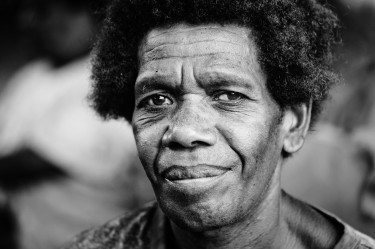
Wikimedia Commons
One of my goals in life is to become a centenarian, someone over 100 years of age. A few years ago, a team of researchers identified four areas that had the highest number of centenarians per capita in the world. They studied these people, wrote a book about them, then distilled their similar lifestyles down to a set of consistent life-giving habits.
And by life giving, I really mean death halting. Since there’s no brake on death, the best you can do is ease off the accelerator. With my added commentary, here are eight ways to do just that, as compiled by author Dan Buettner:
- Find a physical activity you enjoy and keep doing it. Do it for as long as you enjoy it. If and when you tire of that activity, find something else that pleases you. For example, you could start jogging, and if that becomes a bore, move to biking. Then swimming. Then Pilates. Then kickboxing. Then underwater basket weaving. Whatever it is, be sure to do it at least three times a week, moreso for idle or cubicle people. (In my case, since I sit at a desk and work from home, I have to move a lot more than most people to achieve the optimal amount of fitness.)
- Stop eating when you’re no longer hungry, as opposed to being full. There’s a difference. About 20% less food per meal, in fact. In short, this is the best known way to eat less. Stop when satisfied instead of stuffing yourself. Continue reading…
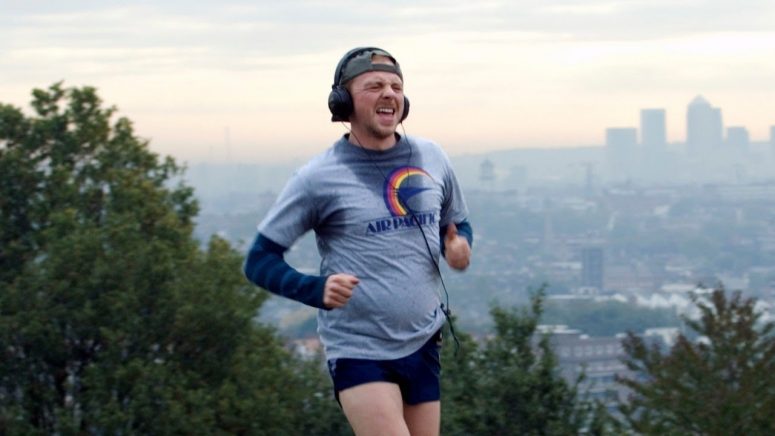
Ten years ago, I had back surgery for the second time. Because my spine was fused, total recovery was six months—an eternity for a busy-body like me.
The first two months of little to no physical activity made me restless. The next several months of low-impact workouts was emasculating. Basically all of the participants on YouTube were senior citizens, if not gray-haired women.
That’s not a bad thing. But it was for a thirty-something like me who was impatiently wanting to return to full activity. Continue reading…
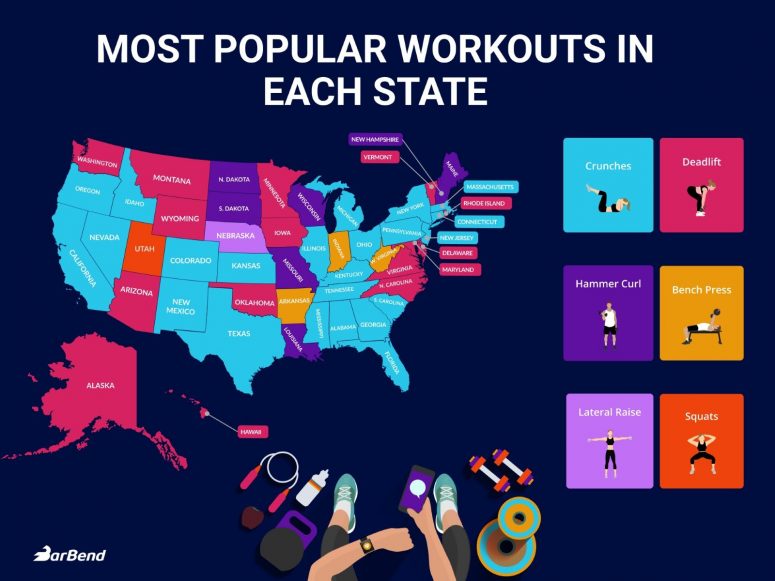
Crunches are the most popular exercise in America, according to a new study by Bar Bend. The study analyzed Google search data to uncover the most popular fitness moves in all 50 states. This is what they found:
- Crunches. Out of all the states’ favorite exercises, crunches are the most popular. With 23 out of 50 states searching for it the most (including New York, California and Florida), the crunch is one of the best ways to train the abdominal muscles. Other than strengthening the core, this type of exercise dramatically improves the posture and the mobility and flexibility of the body.
- Deadlift. Deadlift is one of the most loved (and hated) power lifting exercise by gym-enthusiasts. With 16 out of 50 states searching for it the most (including Virginia, Minnesota and Hawaii), deadlift is the second most popular workout across the country. Deadlifts can help reducing lower back pain and improving core strength.
- Hammer curl. With 6 out of 50 states searching for hammer curl exercises the most (including Missouri, New Hampshire and North and South Dakota), hammer curl is the third most popular exercise in the US. Other than increasing biceps strength, this exercise boosts wrist strength and refines muscle endurance.
- Bench press. Bench press is the fourth most popular exercise across the states, with three out of 50 countries searching for it online (Indiana, Arkansas and West Virginia). Despite being a very good exercise for increasing general upper-body strength, the bench press can be replaced by regular gym goers wanting to work the same same muscles with barbell floor or overhead press, push-ups, or dumbbell bench press.
- Squat. The squat is the most popular exercise only in Utah, with a total average search volume of 5,400 searches per month. Other than improving posture, strengthening core and leg muscles, and defining glutes, squats also prevent knee and ankle injuries.
- Lateral raise. Finally, the lateral raise is the most popular exercise in the state of Nebraska, according to the study. Lateral raises help strengthening the shoulder muscles and improving the general upper body strength.

creative commons
Craig Weiler has the answer:
You have one set of teeth, one set of knees, one set of lungs and one back. If you don’t take care of them, you can’t re-boot. You can get knee replacement surgery and you can get your teeth capped and wear dentures, or get new lungs, but it’s not the same as your originals. The back is much more tricky and if you damage it enough you’re never coming back from it.
You have one set of hands and feet. They are irreplaceable as is your brain. So if you damage them you’re never coming back from it.
Your body, in other words, is a one-off. You will never have another one as long as you live. If you start taking good care of it and you’re mindful in your 20’s, you’ll be far healthier and happier in your 50’s and beyond.”

Wikimedia Commons
PROVO, Ut. — Want to get ahead in this world? Work lots of extra hours — even nights and weekends — experts say, and it will all be worth your while.
“It’s easy to forget what’s most important in life,” says Bill Loney, a certified life coach who hasn’t quite made it in life yet. “Family, friends, and social activities that can often inspire and enrich the life of an individual… these are all distractions in getting more work done,” he adds.
Emma Royds, who hasn’t stopped looking at her smartphone every five minutes for three straight years, councils that most people actually die wishing they had spent more time — not less — working. “People never regret working too much,” she says. “My neighbor opted to do adventurous, social, and fitness-related activities with family and friends in his spare time.
“Now 80, he told me recently he really wishes he would have spent more time on TPS cover sheets, obsessively trying to turn his company into the next big thing, and reading email during every waking hour of his life. It’s kind of sad, really.” Continue reading…
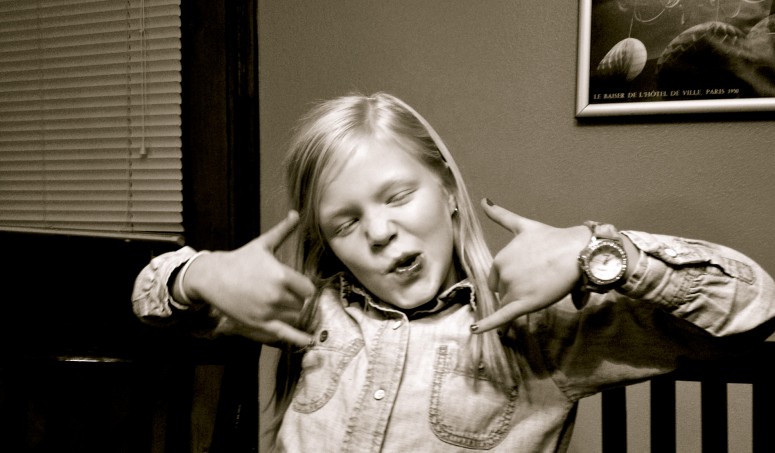
My sister-in-law challenged our family to a plank-off recently. Person who could plank the longest wins. “I don’t know,” I said. “I can’t stomach those things for 30 seconds.”
Or so I told myself.
Before continuing my story, a quick note: Like any inherently lazy human, there are a lot of exercises I hate doing. But planks are the worst—invented by Satan himself. They’re right up there with Turkish getups, mountain climbers, and wall sits as most uncomfortable for me. So I wasn’t enthused to participate.
“I’m in!” my wife said. My daughter, too, was excited to compete. “I’ll try,” I relented, offending Jedi Masters everywhere. Continue reading…
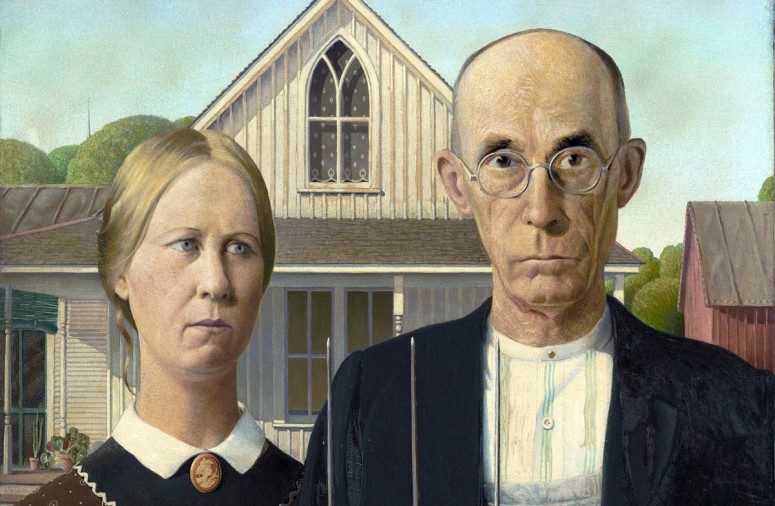
Grant Wood/Wikimedia Commons
As a leading psychologist, Shawn Achor has spent two decades studying happiness. His bona fides include award-winning researcher and teacher at Harvard, best-selling author on positivity, and popular TED lecturer.
So when he speaks you should listen. For instance, Achor asserts our circumstances — including age, race, gender, social status, and wealth — only account for 10% of our happiness. The rest is determined by our genetic baseline for happiness (i.e. optimist vs pessimist) and our individual intentions, including the way we spend our time and the things we ponder.
Obviously, happiness means different things to different people. But there are plenty of standardized things we can do to boost our chances of finding it. Somethings such as knowing oneself, learning how to forgive, and balancing the personal, professional, and social demands on our time can be life-long pursuits.
But other happiness-building attributes are quite easy, Achor argues. In order from least difficult to most difficult, they are as follows: Continue reading…
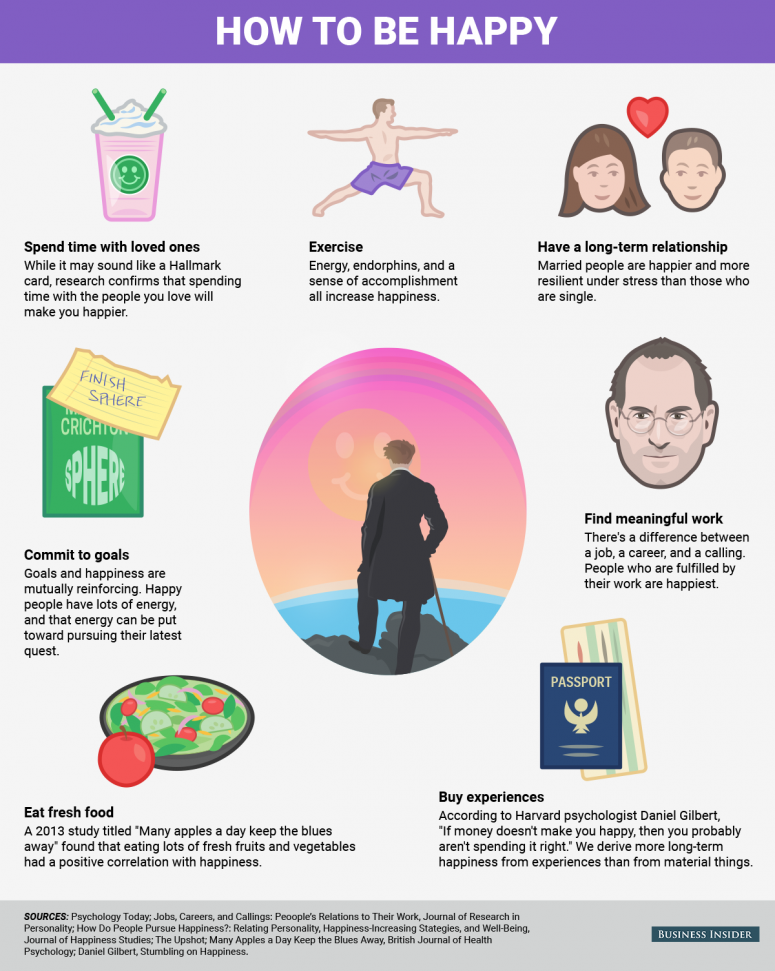
Good summation of advice that certainly mirrors my independent research. #bookmark

Photo: Lindsey Snow
The young man was hiding something. Perhaps unknowingly, but he was still hiding something.
He had spiked hair with an Archie look to it, albeit dishwater blonde instead of bright. A little under six feet tall, he wore an oversized t-shirt and basketball shorts like something out of the ’90s—two sizes too big.
He was pigeon toed, around 175 pounds, and with a case of mild acne. I’m guessing he was 20, give or take a few years.
Why was I so concerned with this guy’s looks, especially as a heterosexual man in a public gym?
I’ll tell you why. Continue reading…
Why do some people willingly participate in unpleasant things like regular exercise, cold showers, bland but healthy food, sacrificial restraint, and drinking lots of water, which cause a lot of annoying bathroom runs?
The short answer: Everything has a price. Good health is no exception. In exchange for long-term health, humans must endure short-term discomfort associated with the above.
In more succinct terms, “no pain, no gain.” That’s the catchphrase Jane Fonda popularized in ’80s workout videos to express that rewards are worth the work. Or as David Morris wrote in The Scientist, “The road to achievement runs only through hardship.”
In my experience, that’s the case for good health as much as anything in life. Of course, knowing that won’t make difficult things easy. But it does give them meaning, which I believe lessens suffering.

credit: lindsey snow
Thanks to my wife, I’ve grown to appreciate winter instead of loathing it. Still, the persistent cold, dormant life, and extended darkness can take its toll on our mood, especially near the tail end of the season.
That said, here are four things everyone can do to beat the winter blues, according to USA Today:
- Volunteer, it will warm your heart. To get inspired, visit United Way.
- Eat healthy, from scratch foods; mostly plants, no seconds, but don’t vilify entire food groups (including sugar). The right nutrition can improve your mood.
- Schedule leisure. Lunch with friends, night out with a loved one, or your next vacation. Anticipating events does wonders for your mood. Planning yearly vacations in late January (after the tax man takes his cut) has served my family well.
- Get moving. Exercise is a dead horse. But I’ll kick it again, because it works. Don’t know where to start? Try a 20 minute outdoor walk everyday or the scientifically proven 7 minute workout.
See you in spring.
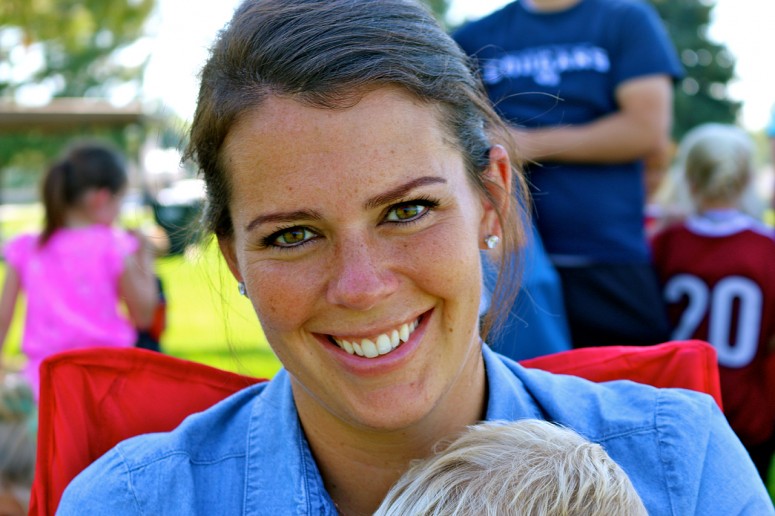
credit: blake snow
I haven’t written one of these in half a decade. In the spirit of Thanksgiving, here goes again. Continue reading…
Cold showers went viral this year. I jumped on the bandwagon this summer and haven’t gone back, not even in winter. Here’s why:
- Indisputable health benefits. Cold showers and winter swimming aren’t fun. Neither is exercise. Humans do all three primarily for the health benefits, which include more vigor, less stress, higher immunity, improved complexion and skin, better circulation, and elevated alertness. Since switching to cold showers, I feel more alive not only in the act, but after the fact. Continue reading…
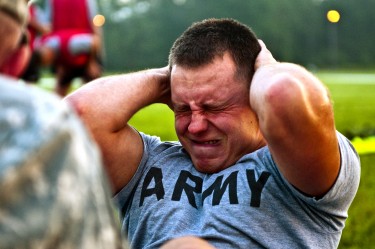
U.S. Army
Beyond the obvious weight loss and cardiovascular benefits of regular fitness, here are a few bonus consequences of working on your body:
- Your skin improves. If vanity is your top goal for getting in shape, I’ve got good news: Regular exercise, particularly when coupled with a healthy diet, does wonders to your hue. If you’re white and pasty like me, your skin starts glowing the longer you work out. It looks healthy, full of color, slightly tan. The reason: “Exercise enhances blood flow to skin,” says Dr. David Katz. Plus, sweating works as a natural cleaning agent, unclogging pores and removing oil and dirt for fewer zits. My skin has never looked healthier. What a pleasant surprise. Continue reading…

My wife looked at me with bright amber eyes the other day and laughed in my face. “Is no hobby off limits for you?” she mused.
We were cleaning our attic and going through an old box of mine. It was a veritable time capsule of previous hobbies I once held dear. The one that made Lindsey laugh most were my magic tricks.
“How much did you spend on these?” she asked. “A few hundred,” I responded. “Let me guess, you only played with them for a few weeks,” she countered.
Probably.
You see, I lose interest in hobbies as quickly as I discover them. I do have lifelong passions—music and sports chief among them. But most of my hobbies are fleeting. I get what I need and then move on to new hobbies. The old ones remain as slice of my former self; a talking point with anyone who has shared my enthusiasm for x, y, or z.
But it’s not out of boredom that I lose interest in hobbies. It’s out of a desire to experience as many things as I can. Someday I’ll list a comprehensive set of passions that I chased in this life. But for now, here are personal hobbies I’m particularly keen on at the moment: Continue reading…
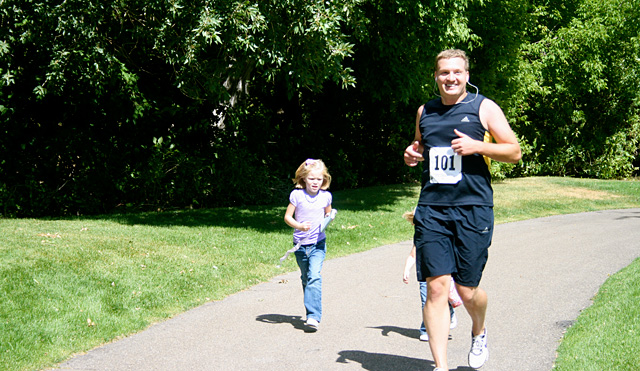 If you’re happy with your health, nutrition and self-image, skip to the next post. If not, read on.
If you’re happy with your health, nutrition and self-image, skip to the next post. If not, read on.
In nine years of marriage, Lindsey and I have never owned a weight scale. Not one.
Why? Because they’re superficial, largely meaningless, and a lousy motivator of long-term health. Continue reading…
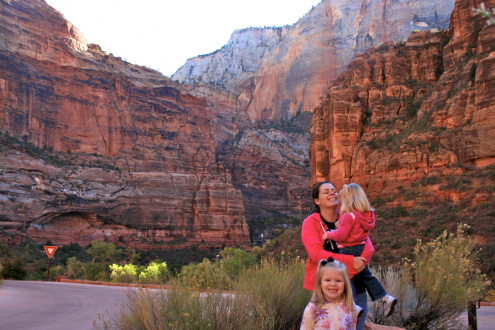
Behold—my obligatory Thanksgiving post. In honesty, I actually write these for myself, as they’re fun to look back on. But most importantly, they make me feel blessed. And who doesn’t like to feel blessed?! Continue reading…

Although the inventor of modern running shoes, Nike doesn’t have a reputation among distance runners these days. Said athletes usually wear one of five brands: Asics (which Nike first sold as a distributor in the ’60s), Mizuno, Brooks, Saucony or New Balance. You just can’t “do it” in Nikes anymore, at least without looking like a corporate shill.
Continue reading…
Some runners are automatic. Day in, day out, they hop on treadmills, negotiate cross-country trails, or sidestep pedestrians and cars in the city. It’s as if “Just do it” was baked into their DNA.
I am not one of them. Despite my efforts, I still get discouraged and have to continually assure myself while running that “I can do it.”
To be fair, I haven’t run that much. I ran the 400m in grade school, taking the coveted, second-to-last-place finish at state finals. I ran religiously for four months in 2005, after making a fleeting new year’s resolution, which resulted in my quitting. And I ran intensively for another four months last year in preparation for a half-marathon, an event I had to postpone due to a ruptured disc in my lower back, which also put my running on hold until earlier this month.
I admit that my limited running accomplishments get me through my runs better than I would without, but I feel almost as discouraged now as I did while training for my first long-distance race. Is it unrealistic to hope to become a robot runner — one that doesn’t have to play mind games during every workout — say after running three times weekly for an entire year? I’ll keep on trucking regardless, but it sure would be nice.
At the recommendation of my surgeon, I started doing calisthenics this week in an effort to stretch my healing back and start building my core (so my lower discs don’t have to work so hard). I also need to lose more weight — I currently weigh 212 lbs. Not so fun fact: I weighed 185 at my wedding five years ago. But I digress.
After almost three months of atrophy, I’m amazed how quickly the human body becomes unfit. I’m breathing like crazy after only 10 push ups, whereas three months ago I was in the best shape I’ve been since high school. But I must say, the stretching and light work outs alleviate the lingering pain in my leg caused by a once flattened sciatic nerve. Is nice!
I’m anxious to get back to running, but have to wait another month before doing so. So have you been exercising? Tsk, tsk.
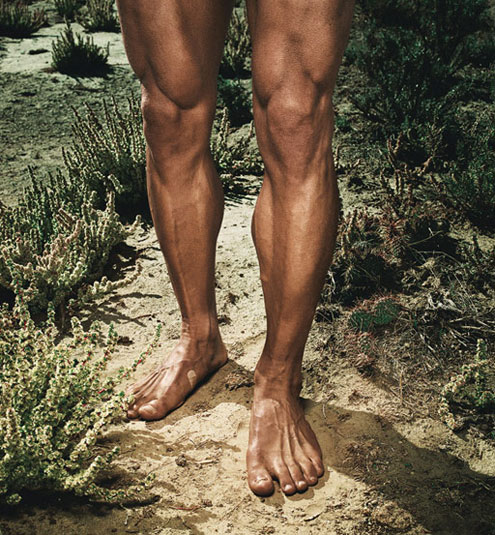
This is an oldie but goodie entitled The Perfect Human, courtesy of Wired.
Dean Karnazes ran 50 marathons in 50 days. He does 200 miles just for fun. He’ll race in 120-degree heat. Here are 12 secrets to his success.
Reading this article back in January 2007 was one of the reasons I took an interest in running.
I ruptured a disc in my lower back on July 4. I successfully ran a 10K that day, but the spine cushion (as it is called) blew due to genetics, not physical exertion, I’m told. The demanding event and requisite training only aggravated an already degenerative disc.
On Friday, I had a discectomy to cure the problem, which slices through my back, drills a hole in my vertebrae, and traverses the sacred spinal canal to remove the loose fragment that was pinning my sciatic nerve against my bone, causing pain throughout my entire right leg.
Continue reading…










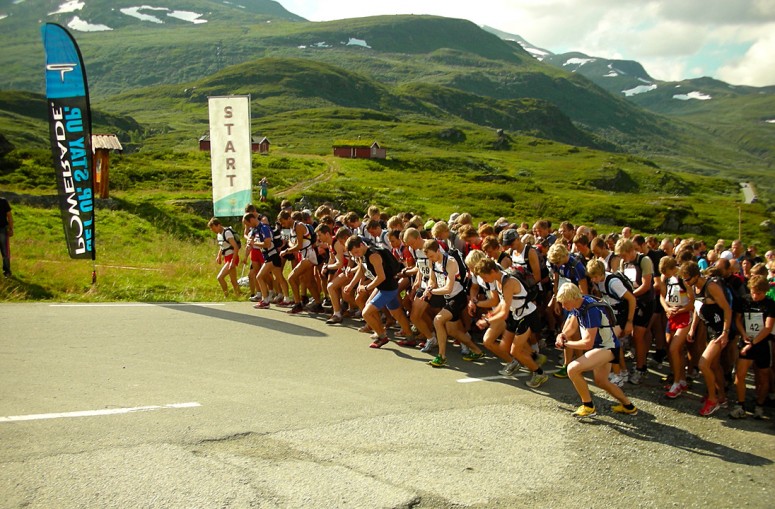


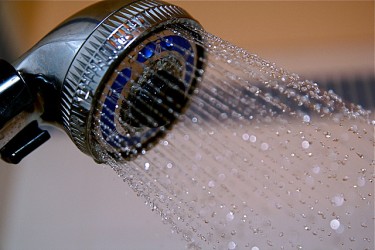


 If you’re happy with your health, nutrition and self-image, skip to the next post. If not, read on.
If you’re happy with your health, nutrition and self-image, skip to the next post. If not, read on. 

